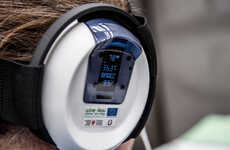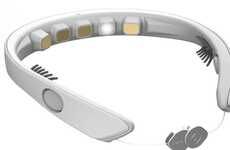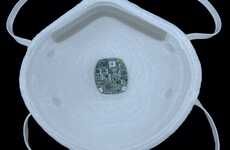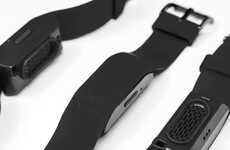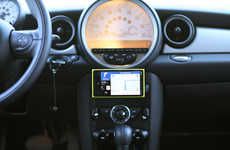The HARKEN System Monitors Drivers' Fatigue
Rahul Kalvapalle — July 23, 2014 — Autos
References: harken.ibv.org & gizmag
A consortium of European companies and educational institutions is developing a technology that uses seat-located sensors to detect drivers' fatigue by monitoring their heart rate and respiration.
The system comprises three primary components -- a sensor on the inside of the seat belt's chest strap that monitors heart rate, seat back sensors that measure respiration and a signal processing unit located below the seat.
If the readings from all these sensors suggest that the driver is becoming dangerously fatigued, the system will sound an alarm or warn the driver about their fatigue levels.
The system -- dubbed 'HARKEN' or 'Heart and Respiration In-Car Embedded Nonintrusive Sensors -- has been assessed on closed tracks, and will soon be tested on open roads to see how capable it is of accurately detecting drivers' fatigue
The system comprises three primary components -- a sensor on the inside of the seat belt's chest strap that monitors heart rate, seat back sensors that measure respiration and a signal processing unit located below the seat.
If the readings from all these sensors suggest that the driver is becoming dangerously fatigued, the system will sound an alarm or warn the driver about their fatigue levels.
The system -- dubbed 'HARKEN' or 'Heart and Respiration In-Car Embedded Nonintrusive Sensors -- has been assessed on closed tracks, and will soon be tested on open roads to see how capable it is of accurately detecting drivers' fatigue
Trend Themes
1. Fatigue Detection Systems - The rise of seat-located sensors that monitor drivers' heart rate and respiration is providing an opportunity for the development of fatigue detection systems.
2. Non-invasive Wearables - The HARKEN system's nonintrusive sensors that detect fatigue by monitoring heart rate and respiration can inspire research on non-invasive wearables in various industries.
3. AI-driven Fatigue Detection - Artificial intelligence can be used in monitoring and analyzing the data collected by the HARKEN system to create AI-driven fatigue detection solutions.
Industry Implications
1. Automotive - Fatigue detection systems like HARKEN provide an innovative solution for the automotive industry to improve driver safety and reduce the risk of accidents caused by driver fatigue.
2. Transportation - The development of fatigue detection systems can benefit the transportation industry to ensure that drivers, pilots, and train conductors are more alert and responsive during long trips.
3. Healthcare - The non-invasive wearables and sensor technology used in the HARKEN system can be applied in the healthcare industry to monitor and collect health data, offering potential solutions for patient care.
0.6
Score
Popularity
Activity
Freshness


